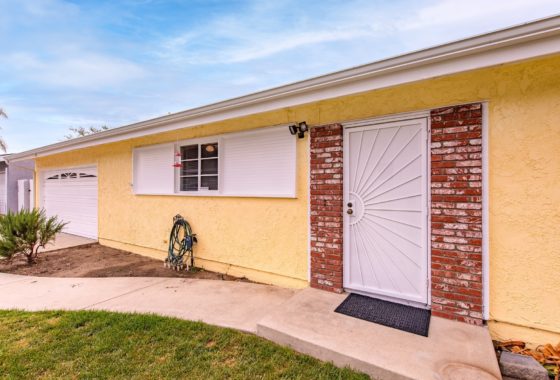 Sales of Simi Valley single family detached homes slowed by 42% in February 2014. The decrease in the number of homes sold each month began five months ago. The median home price over the same five-month period has held steady at approximately $480,000, the months it has dipped below that are more related to the lack of properties selling above $800,000. The average list to sell ratio is almost 98%, looking across the different segments of the market indicates that sellers trying to eke out an extra $5000 – $25,000 are no longer finding cooperative buyers. Last year the Simi Valley housing market realized an approximate 18% to 20% increase in prices, expecting this to continue through 2014 is most likely unrealistic.
Sales of Simi Valley single family detached homes slowed by 42% in February 2014. The decrease in the number of homes sold each month began five months ago. The median home price over the same five-month period has held steady at approximately $480,000, the months it has dipped below that are more related to the lack of properties selling above $800,000. The average list to sell ratio is almost 98%, looking across the different segments of the market indicates that sellers trying to eke out an extra $5000 – $25,000 are no longer finding cooperative buyers. Last year the Simi Valley housing market realized an approximate 18% to 20% increase in prices, expecting this to continue through 2014 is most likely unrealistic.
In 2004 the Harvard Kennedy School of Government released a paper discussing housing values and revealed housing prices have gone up on average 2% per year since 1950. The Paper stated that quality of housing and rising construction costs were most related to the average increases between 1950 and 1970. From 1970 to present the Paper states that difficulty in obtaining regulatory approval had a greater impact on the average increase in housing prices. All you have to do is look at what it takes to get a development like Simi Valley’s Big Sky community approved and where those prices started, to understand the impact of governmental regulatory approvals on new housing developments.
A report released by USA Today (Why Home Values May Take Decades To Recover by Dennis Cauchaon) states:
“Homes were once for living, not investing. Throughout the 20th century, homes were stable, unspectacular investments. The average annual investment return from 1950-2000 was less than one-half of 1% per year, after adjusting for inflation”
“Historically, home prices have been equal to about three times average household income. In 2005, they peaked at 4.5 times income.”
Based off some rough numbers, Simi Valley’s price to income ratio is approximately 5.3 times. The USA Today figures are national figures, housing in Southern California is far different than in Nebraska, so the east and west coasts should see a higher ratio than say the Indianas, Ohios and Nebraskas.
The 18% to 20% increase in home prices that began in the last quarter of 2012 and continued through the end of 2013 has been good for home sellers, there’s no doubt about that; however with interest rates now a full 1% to 1.5% higher than 18 months ago the 2014 housing market will see far more modest gains for the year.
[wnt_grid maptype=”disabled” exactcity=”1″ ownertype=”all” paginated=”true” sortoptions=”true” maxresults=”6″ search_mode=”form” primarysearchtype=”active” searchtype=”city” state=”CA” min_price=”0″ max_price=”1000000000″ listing_status=”Active” newListings=”1″ county=”Ventura” city=”Simi Valley” /]

Leave a Reply